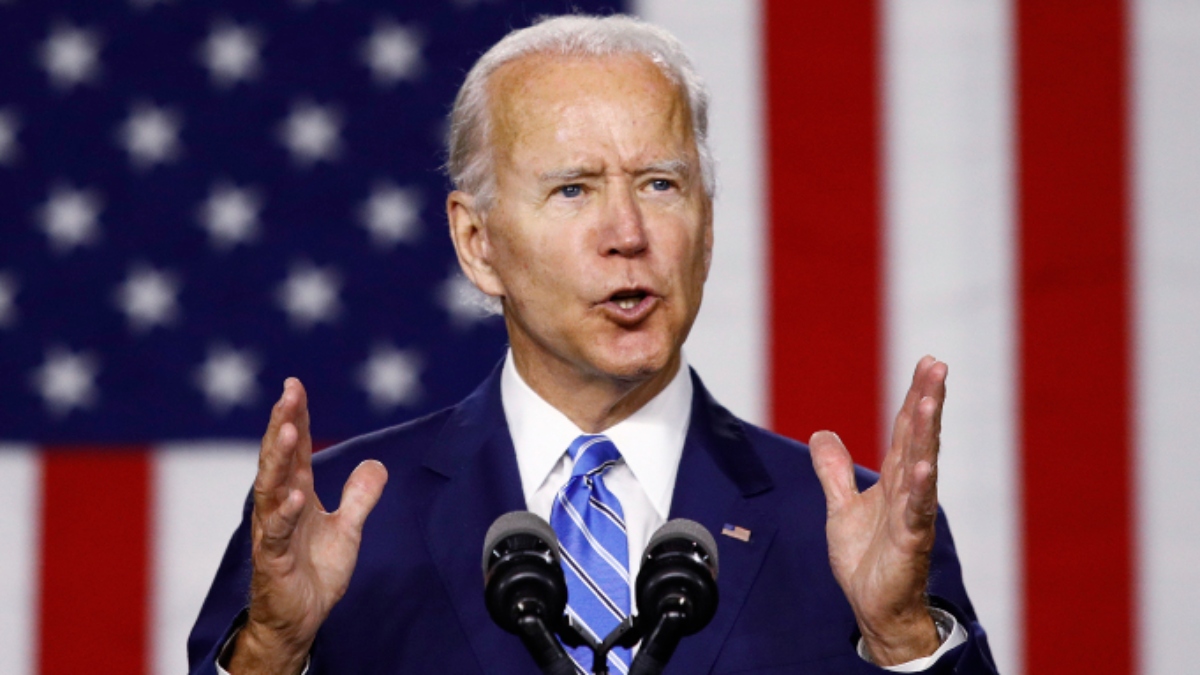President Joe Biden is talking about unity, but in his first days in office, he’s pursued a divided economic agenda that will undercut the recovery he’s promised to deliver.
To bring the country together around revived job opportunity and wage growth, he is going to have to break with the leftist ideology dominating his first moves on the economy.
The biggest threat to President Biden’s pursuit of economic recovery isn’t coming from outside his party, but from within it.
It’s no secret that Democrats are divided between purple-state centrists and blue-state progressives. But those ideological divisions are now showing up in economic policy that is at odds with itself.
Consider the president’s first moves on the economy. He’s proposed COVID-relief legislation that includes tens of billions of dollars in additional aid for small businesses struggling to retain employees amid shutdowns. But the very same legislation calls for a nationwide increase in the minimum wage to $15 per hour, a move that would drastically increase wage costs and spur job cuts for businesses in dozens of states.
On the one hand, the government offers cash to help businesses make payroll, and with the other hand, it makes that payroll unaffordable.
Or take manufacturing. President Biden on Monday signed an executive order imposing new “buy American” requirements on government purchases, part of his pledge to strengthen U.S. manufacturing. But it follows on the heels of a slew of executive orders last week that canceled a major energy infrastructure project, halted new oil and gas leasing and drilling permits on federal land, and recommitted the U.S. to the Paris Climate Agreement.
Not only do these new energy regulations and restrictions directly and negatively affect manufacturing jobs, but restricting fossil fuel production in the U.S. will raise energy prices and rejoining the Paris Climate Agreement introduces heightened uncertainty about new energy regulation. And no sector of the economy is more dependent on low-cost, reliable energy than America’s manufacturing and industrial base.
Once again, it’s the same pattern: with one hand, government extends cash, and with the other it makes the cost of doing business unsustainable.
These contradictions in President Biden’s economic plan are nothing new. He campaigned on themes of “Made in America” and “Build Back Better” at the same time that he proposed tax and regulatory increases that would make America a more costly place to invest in a business.
The difference is that logically inconsistent campaign ideas are fast becoming a frustrating reality for businesses.
President Biden is right that a strong economic recovery is part of the recipe to promote unity in our country. But he’s using the wrong ingredients.
Prior to the pandemic, America saw poverty and unemployment rates tumble and wages rise fastest for those at the bottom thanks to lower taxes and lighter touch regulation that spurred hiring and investment. COVID shutdowns suppressed that dynamism but didn’t destroy it. We saw job growth re-emerge last summer as the economy re-opened. And it’s ready to break out again as vaccines bring COVID under control, provided bad policy doesn’t get in the way.
Biden has been too willing to adopt the mantra on the left that the pre-pandemic economy was a disaster. As a result, he’s been too quick to pursue policy that would undermine some of America’s greatest competitive advantages—competitive tax rates, less burdensome regulation, and abundant energy.
Self-defeating economic policy that gives with one hand and takes with the other won’t speed up recovery or strengthen America’s manufacturers. But leveraging America’s proven strengths will. If President Biden really wants to bring the country together around opportunity, he’ll draw a hard line against policy that saddles businesses and workers with higher costs and more uncertainty, and build on what’s proven to work.

